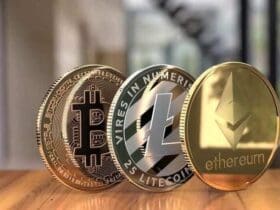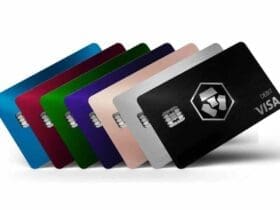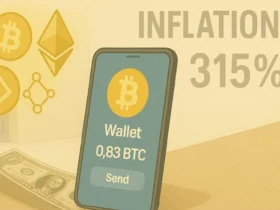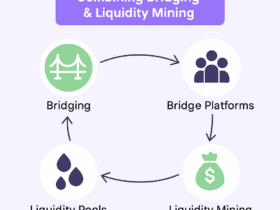In this article, I will explain how to seamlessly bridge tokens from Binance Smart Chain using a step-by-step approach.
You will learn how to safely transfer your tokens from the BSC ecosystem to other blockchains, gain insight into the required platforms, tools, and methodologies, and learn critical tips to avert blunders. Whether you are a novice or a seasoned user, this guide will be beneficial to you.
What Does “bridging tokens” mean?
Bridging tokens pertains to moving cryptocurrency from one blockchain network to another. Every Blockchain works autonomously, meaning assets on one chain, for example, Binance Smart Chain (BSC), cannot be accessed on Ethereum without a bridge.
Bridges serve as secure middlemen, locking tokens on the source chain, and minting equivalent tokens on the destination chain. This permits the use of decentralized applications, liquidity pools, or trading on different networks.
Bridging helps maintain the token’s value while enhancing its usability on various blockchains. It helps foster the expanding cross-chain DeFi network and links self-contained networks without barriers.
How To Bridge Tokens From Binance Smart Chain
Step 1: Prepare Your Wallet
You must have a MetaMask wallet on BSC with tokens ready for bridging. Ensure there’s BNB on hand for fee payment to complete all bridging steps.
Step 2: Access Multichain Bridge

Go to Multichain.org, and link your wallet. Authorize bridging permissions so that the platform can read your wallet and perform transaction bridging securely.
Step 3: Select Source and Destination Chains
Select BSC as the source with the token. Then, select Ethereum, Polygon, or Avalanche as the destination for your bridged tokens.
Step 4: Enter the Amount to Bridge
Enter the tokens to transfer. Confirm Bridge fees, and that your wallet has BNB for the network transaction fee.
Step 5: Confirm the Transaction
Press “Bridge” or “Swap” and approve the transaction on your wallet. BSC confirmation will begin the token minting for the destination chain.
Step 6: Await the Arrival of Your Tokens
How fast you receive a transaction will depend on the current network traffic. Once the transaction is confirmed, the bridged tokens will be available in the destination wallet, waiting to be used in trading, providing liquidity, or other DeFi activities.
Step 7: Confirm and Use Your Tokens
Access the destination wallet to confirm all tokens are present. Trading, staking, or utilizing the tokens in DeFi apps on the new blockchain are all available options.
Best Binance Smart Chain Bridge Platform
1. Binance Bridge (Official)
Binance Bridge serves as the official bridging platform of Binance and provides seamless and efficient transfers between Binance Smart Chain and other major blockchains like Ethereum and Polygon.

Since it is fully integrated within the ecosystem of Binance, it assures high trust and liquidity. Users have low fee access with strong security and simple interfaces. These features are beneficial to beginners and traders needing a fast, audited, and officially backed bridging solution.
| Feature | Description |
|---|---|
| Official Support | Developed and maintained by Binance, ensuring security and reliability. |
| Supported Chains | Binance Smart Chain, Ethereum, Polygon, Avalanche, and more. |
| Token Support | Popular tokens like BNB, BUSD, USDT, USDC, and other major BEP-20 tokens. |
| Fees | Low fees; primarily BSC gas plus minimal bridge fee. |
| Ease of Use | Beginner-friendly interface integrated with Binance ecosystem. |
| Security | Fully audited and trusted by Binance users worldwide. |
2. Multichain (AnySwap)
Formerly known as AnySwap, Multichain offers support to numerous blockchains and tokens, making it highly adaptable. It offers bridging capabilities to Ethereum, Polygon, Avalanche, Fantom, and others.

The platform focuses on speed and low transaction costs, however, Multichain users need to pay attention to the tokens they would like to bridge. The platform is popular among users of decentralized finance due to the cross-chain liquidity and staking.
| Feature | Description |
|---|---|
| Cross-Chain Support | Supports multiple blockchains including BSC, Ethereum, Polygon, Avalanche, Fantom. |
| Token Variety | Bridges a wide range of tokens with high flexibility. |
| Fees | Low platform fees and competitive network fees. |
| Speed | Fast bridging with real-time status updates. |
| User Interface | Simple interface suitable for experienced DeFi users. |
| Security | Decentralized and audited smart contracts for safe transfers. |
3. Celer cBridge
Celer cBridge enables quick and economical cross-chain transfers, focusing on effectiveness and growth. It covers numerous blockchains, including BSC, Ethereum, and Polygon, offering real-time transaction monitoring. Its rapid bridging is especially useful for frequent traders and users making minor transfers.

Celer simplifies interface navigation and makes use of off-chain scaling to ease network congestion and fees, delivering a hassle-free experience for users bridging tokens securely across chains.
| Feature | Description |
|---|---|
| High-Speed Transfers | Designed for fast cross-chain transactions with minimal delays. |
| Multi-Chain Support | BSC, Ethereum, Polygon, and other major chains. |
| Low Fees | Off-chain scaling reduces network congestion and gas fees. |
| Transaction Tracking | Real-time status updates for each bridging transaction. |
| Ease of Use | Simple interface for frequent traders and DeFi users. |
| Security | Audited smart contracts and reliable bridging mechanisms. |
4. Wormhole (for Solana, etc.)
Wormhole serves as a bridge connecting Solana to other major blockchains such as Ethereum, BSC, and Terra. It enables users to transfer value tokens between high-performance networks without value degradation.

Wormhole aids users seeking access to the Solana ecosystem and its DeFi applications. It is essential, however, to ensure the destination chain supports the bridged token, and users must adhere to security best practices cross-chain bridging is risky.
| Feature | Description |
|---|---|
| Solana Focused | Primarily bridges Solana to Ethereum, BSC, Terra, and other chains. |
| Cross-Chain Token Support | Enables transferring tokens across high-performance networks. |
| Speed | Fast bridging optimized for Solana ecosystem. |
| Use Cases | Access DeFi apps and liquidity pools on Solana and other chains. |
| Security | Smart contracts audited, but users must verify supported tokens carefully. |
| Flexibility | Supports complex cross-chain DeFi activities. |
Tokens That Can Be Bridged From BSC
Common BSC Tokens (BNB, BUSD, USDT, USDC, etc.)
Much like other BSC tokens, BNB, BUSD, USDT, and USDC can be bridged to other blockchains with minimal risk of losing them.
Considerations Regarding Supported Tokens for Different Destination Chains
Every blockchain has its limitations, so always confirm that the destination chain supports your token prior to executing a bridge transaction.
Cautions Regarding Unsupported Tokens
Undertaking the bridging of tokens that are not supported can cause loss of those tokens permanently. Ensure you confirm compatibility first.
Fees and Transaction Times
Charges on Bridged Network BSC Gas Fees
To bridge tokens, one needs to have BNB which acts as payment for Binance Smart Chain network fees. BSC Gas Fees. Just as with any BSC service, the Bridging service has a gas fee. Make sure that BNB is available at sufficient amounts in your account for ease of transactions.
Fees on Bridge Services
As seen with any service these days, a small fee is charged. With each bridge service provided, a small fee is charged as a percentage of the total amount transferred. Since platform fees tend to differ, they have a direct impact on the total bridging fee.
Usual Duration for Transactions
In most scenarios, bridging tokens transpire in matter of minutes. In most cases, bridging tokens completes within minutes; in some cases (due to network congestion or prolonged platform processing times), a transfer can take from 30 to 60 minutes.
Parameters Influencing Price and Duration
As previously discussed, the nature and type of tokens, and the efficiency of the bridge platform greatly influence the estimated time for processing. Alongside other factors – the type of network, congestion levels, and the destination of your tokens adds complexity to the transfer.
Safety Tips and Best Practices
Use Only Reputable Bridges
Avoid unknown or unverified bridges to prevent scams or loss of funds. Always use well-known and audited platforms like Binance Bridge, Multichain, or Celer cBridge.
Double-Check Destination Chain and Wallet Address
Initiating the bridging process requires the user to ensure that the destination chain and wallet address are accurate. Misaddressed tokens may be irretrievably lost.
Avoid Low-Liquidity or Unsupported Tokens
Bridging tokens that are rare or unsupported by the chains often lead to either failure or stagnation of funds. Always ensure that both destination chains support the token.
Keep a Small Test Transaction First
First confirm the functionality of the bridging process with a small value. After the successful completion, feel free to increase the amounts with the assurance that funds are well protected.
Pros And Cons
| Pros | Cons |
|---|---|
| Access to Multiple Blockchains: You can use your BSC tokens on Ethereum, Polygon, Solana, and other networks. | Transaction Fees: Bridging involves network gas fees and platform fees, which can be high during congestion. |
| DeFi and Trading Opportunities: Enables participation in liquidity pools, staking, and decentralized exchanges across multiple chains. | Risk of Errors: Sending tokens to the wrong chain or wallet can result in permanent loss. |
| Increased Token Utility: Tokens are not limited to BSC; they can be used in other ecosystems for trading and DeFi. | Transaction Time: Bridging may take minutes to hours depending on network congestion. |
| Security with Reputable Bridges: Official or audited bridges provide a secure way to transfer assets. | Unsupported Tokens: Some tokens cannot be bridged, and attempting may result in stuck or lost funds. |
| Cross-Chain Flexibility: Simplifies movement of assets for portfolio diversification or arbitrage opportunities. | Complexity for Beginners: New users may find the process confusing without proper guidance. |
Conclusion
In Conclusion The Binance Smart Chain bridging tokens facilitates cross-chain access between multiple blockchains. This greatly stands to enhance trading as well as DeFi activities.
Employing reputable bridges, confirming destination chains, and beginning with modest test transactions enables safe transfer of tokens. Knowing fee structure, transaction duration, and token compatibility makes bridging between networks more efficient and secure.
FAQ
A BSC-compatible wallet (MetaMask, Trust Wallet), the token to bridge, some BNB for fees, and access to a bridge platform.
Binance Bridge, Multichain (AnySwap), Celer cBridge, and Wormhole. Always verify URLs to avoid scams.
Yes. Network (BSC gas) and bridge platform fees apply, varying by token and platform.














Got a Questions?
Find us on Socials or Contact us and we’ll get back to you as soon as possible.